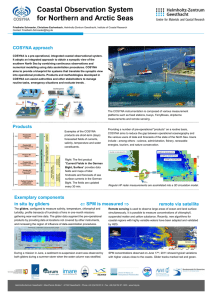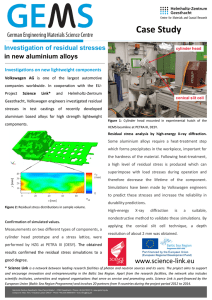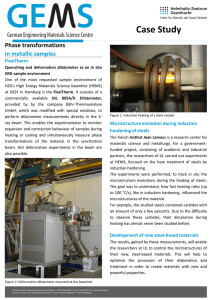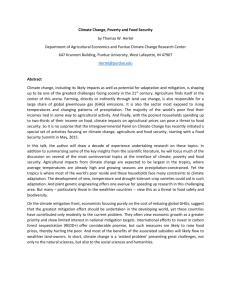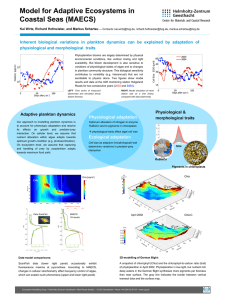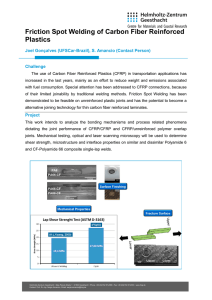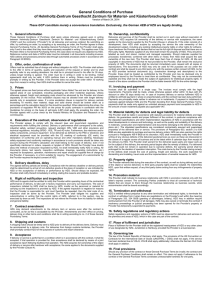RE KLIM
advertisement
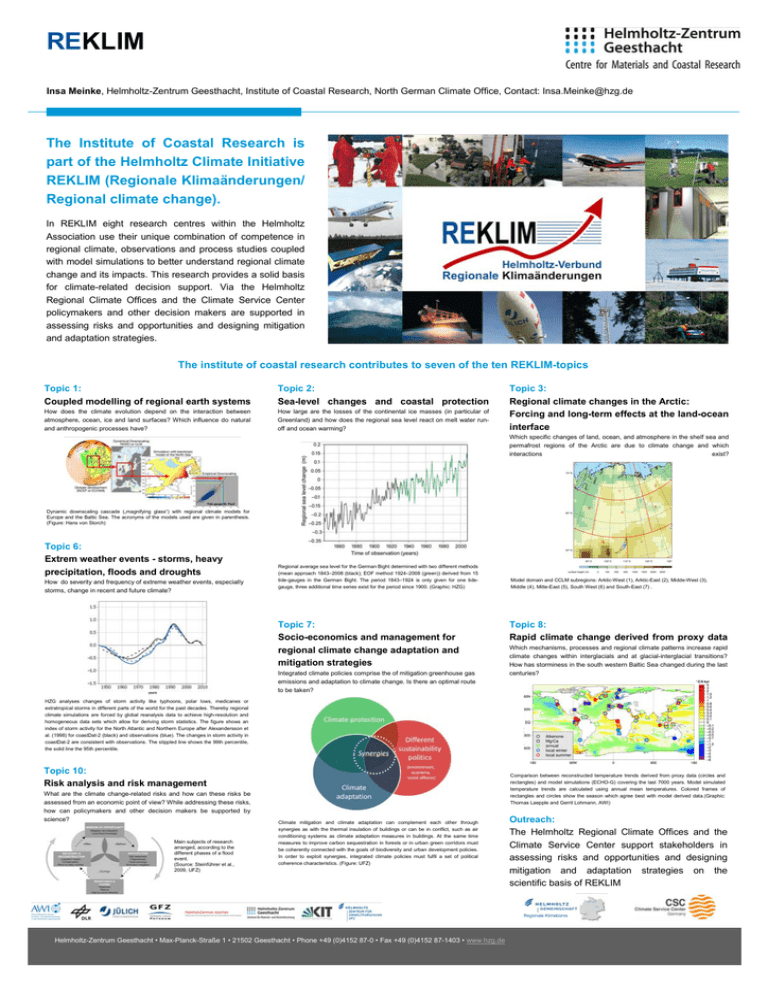
REKLIM Insa Meinke, Helmholtz-Zentrum Geesthacht, Institute of Coastal Research, North German Climate Office, Contact: Insa.Meinke@hzg.de The Institute of Coastal Research is part of the Helmholtz Climate Initiative REKLIM (Regionale Klimaänderungen/ Regional climate change). In REKLIM eight research centres within the Helmholtz Association use their unique combination of competence in regional climate, observations and process studies coupled with model simulations to better understand regional climate change and its impacts. This research provides a solid basis for climate-related decision support. Via the Helmholtz Regional Climate Offices and the Climate Service Center policymakers and other decision makers are supported in assessing risks and opportunities and designing mitigation and adaptation strategies. The institute of coastal research contributes to seven of the ten REKLIM-topics Topic 1: Coupled modelling of regional earth systems Topic 2: Sea-level changes and coastal protection How does the climate evolution depend on the interaction between atmosphere, ocean, ice and land surfaces? Which influence do natural and anthropogenic processes have? How large are the losses of the continental ice masses (in particular of Greenland) and how does the regional sea level react on melt water runoff and ocean warming? Topic 3: Regional climate changes in the Arctic: Forcing and long-term effects at the land-ocean interface Which specific changes of land, ocean, and atmosphere in the shelf sea and permafrost regions of the Arctic are due to climate change and which interactions exist? Dynamic downscaling cascade („magnifying glass“) with regional climate models for Europe and the Baltic Sea. The acronyms of the models used are given in parenthesis. (Figure: Hans von Storch) Topic 6: Extrem weather events - storms, heavy precipitation, floods and droughts How do severity and frequency of extreme weather events, especially storms, change in recent and future climate? Regional average sea level for the German Bight determined with two different methods (mean approach 1843–2008 (black); EOF method 1924–2008 (green)) derived from 15 tide-gauges in the German Bight. The period 1843–1924 is only given for one tidegauge, three additional time series exist for the period since 1900. (Graphic: HZG) Topic 7: Socio-economics and management for regional climate change adaptation and mitigation strategies Integrated climate policies comprise the of mitigation greenhouse gas emissions and adaptation to climate change. Is there an optimal route to be taken? Model domain and CCLM subregions: Arktic-West (1), Arktic-East (2), Midde-West (3), Middle (4), Mitte-East (5), South West (6) and South-East (7) . Topic 8: Rapid climate change derived from proxy data Which mechanisms, processes and regional climate patterns increase rapid climate changes within interglacials and at glacial-interglacial transitions? How has storminess in the south western Baltic Sea changed during the last centuries? HZG analyses changes of storm activity like typhoons, polar lows, medicanes or extratropical storms in different parts of the world for the past decades. Thereby regional climate simulations are forced by global reanalysis data to achieve high-resolution and homogeneous data sets which allow for deriving storm statistics. The figure shows an index of storm activity for the North Atlantic and Northern Europe after Alexandersson et al. (1998) for coastDat-2 (black) and observations (blue). The changes in storm activity in coastDat-2 are consistent with observations. The stippled line shows the 99th percentile, the solid line the 95th percentile. Topic 10: Risk analysis and risk management What are the climate change-related risks and how can these risks be assessed from an economic point of view? While addressing these risks, how can policymakers and other decision makers be supported by science? Main subjects of research arranged, according to the different phases of a flood event. (Source: Steinführer et al., 2009, UFZ) Comparison between reconstructed temperature trends derived from proxy data (circles and rectangles) and model simulations (ECHO-G) covering the last 7000 years. Model simulated temperature trends are calculated using annual mean temperatures. Colored frames of rectangles and circles show the season which agree best with model derived data.(Graphic: Thomas Laepple and Gerrit Lohmann, AWI) Climate mitigation and climate adaptation can complement each other through synergies as with the thermal insulation of buildings or can be in conflict, such as air conditioning systems as climate adaptation measures in buildings. At the same time measures to improve carbon sequestration in forests or in urban green corridors must be coherently connected with the goals of biodiversity and urban development policies. In order to exploit synergies, integrated climate policies must fulfil a set of political coherence characteristics. (Figure: UFZ) Outreach: The Helmholtz Regional Climate Offices and the Climate Service Center support stakeholders in assessing risks and opportunities and designing mitigation and adaptation strategies on the scientific basis of REKLIM Regionale Klimabüros Helmholtz-Zentrum Geesthacht • Max-Planck-Straße 1 • 21502 Geesthacht • Phone +49 (0)4152 87-0 • Fax +49 (0)4152 87-1403 • www.hzg.de
